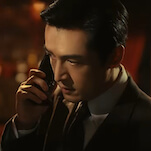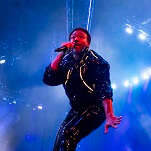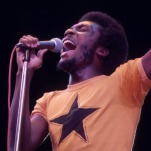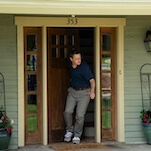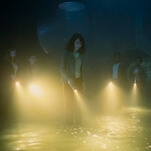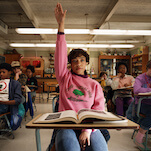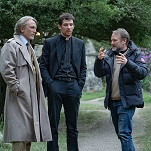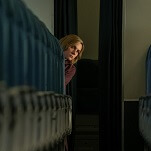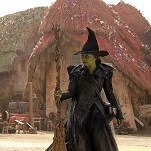And yet however personal Love Is Strange may be, it also draws clear inspiration from a fictional source. The film’s inciting incident isn’t the wedding, but its unfortunate side effect: George, an openly gay instructor at a Catholic school, loses his job when the religious leadership learns of his marriage. Suddenly strapped for cash, the two men must give up the New York City apartment they’ve lived in for years. What’s worse, they soon discover that their friends and family in the city can only accommodate one of them apiece, meaning that the newly married couple must—after four decades together—live apart. Fans of Golden Age cinema will at this point note the narrative similarity to one of the finest tearjerkers in Hollywood history, Leo McCarey’s Make Way For Tomorrow. The gender of one of the lovers may have changed, but the basic scenario has not; Sachs has retold a Depression-era classic for a new age of economic hardship.
Ben, a gregarious talker, ends up squatting in the small Brooklyn apartment of his nephew Elliot (Darren Burrows), whose novelist wife Kate (Marisa Tomei) and surly teenage son Joey (Charlie Tahan) struggle to remain polite to their inconvenient houseguest. Across town, displaced academic George crashes with another couple, cops Roberto (Manny Perez) and Ted (Cheyenne Jackson), whose frequent house-parties conflict with the quieter lifestyle to which he’s accustomed. It’s an untenable situation for all involved, and Sachs sees both comedy and tragedy in his characters’ predicament. Like its 80-year-old predecessor, Love Is Strange soberly acknowledges the indignity of losing autonomy so late in life, as well as the strain taking in a relative can put on a household. Sachs is actually a bit fairer to his supporting characters, painting them as less conniving and more patient than the put-upon family members of McCarey’s movie. (Tomei, especially, strikes a commendable balance between empathy and exasperation.)
Setting several scenes to the famously poignant plinks of pianist Frédéric Chopin, Love Is Strange never achieves the sheer emotional resonance of Make Way For Tomorrow; it’s gently affecting, not deeply heartbreaking—in part because Sachs builds to a less devastating punctuation than McCarey did. But the filmmaker observes with great sensitivity, letting certain conflicts play just below the surface. (A subplot involving Joey’s European classmate seems superfluous until Sachs reveals its function, which is to subtly expose Elliot’s casual homophobia.) And both Lithgow and Molina are superb—so comfortable and familiar together, during the relatively limited screentime they share, that the phantom impression of a 40-year relationship appears. When one, but not the other, is on-screen, the absence is felt. Such insight into the nature of long-term relationships is uncommon—and somewhat surprising, coming as it does from a filmmaker who’s only just embarked on the adventure of marriage.




